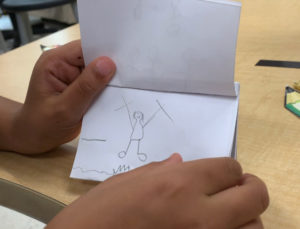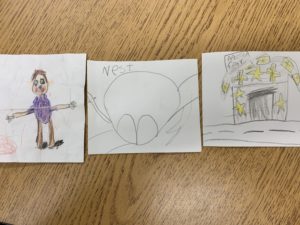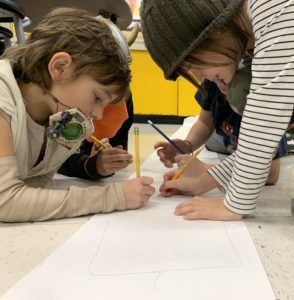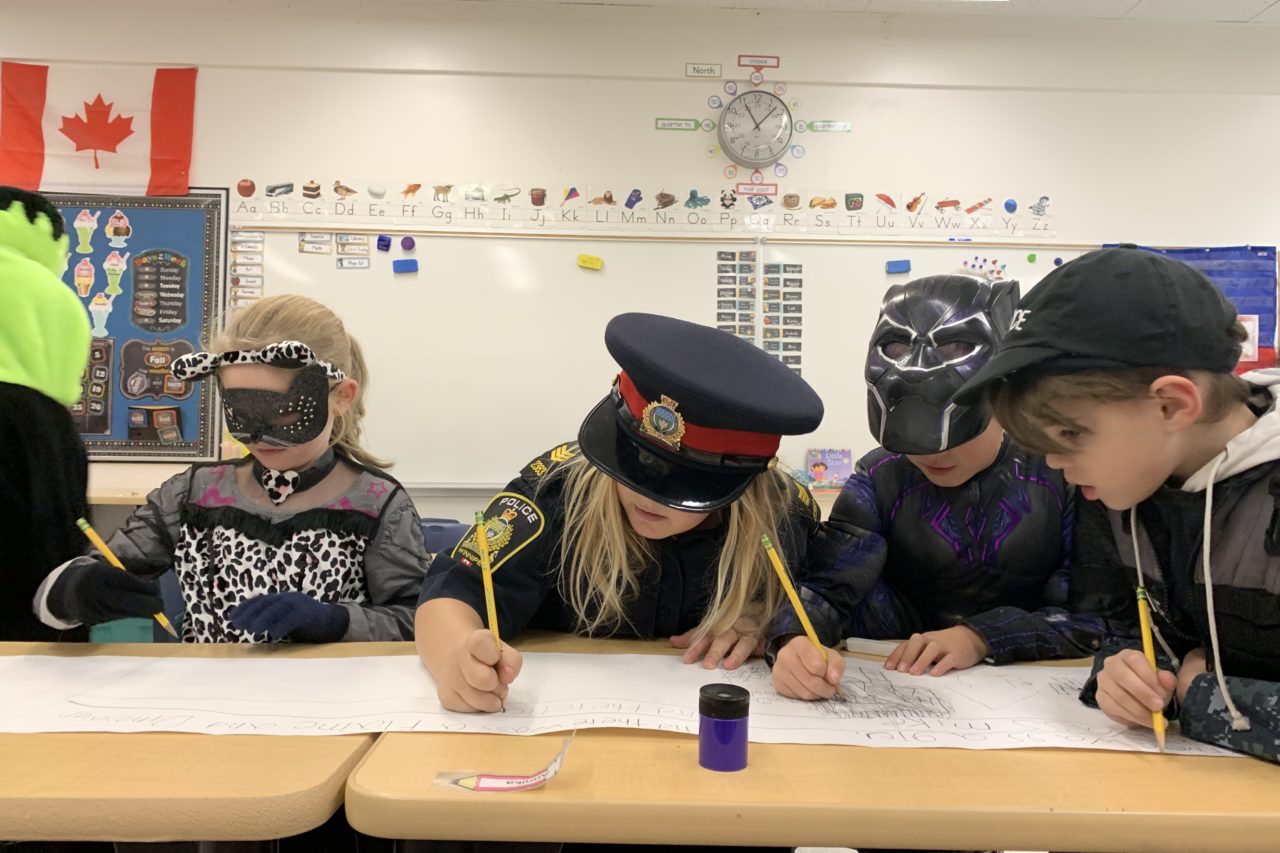Peek into Sheila Krahn’s writing workshop and you’ll see children deep in thought and furiously writing their ideas into all shapes and sizes of books. Early in the year, Sheila made one, significant change to her writing time with her kids that continues to evolve as they learn how to write from books they read in class. What was that one change? Sheila had been using notebooks to hold all of her student’s writing. After being introduced to Katie Wood Ray’s, About the Authors, Sheila decided to offer the children small stapled books to write their stories in. Introducing this one new element was a game changer. One of Sheila’s students, who had previously chosen not to write, wrote three stories that first day, with plans to continue the series the following day. Children who didn’t see themselves as writers, began to see themselves as writers.

While Sheila’s daily writing program takes on a writing workshop format, she peppers this daily writing with writing challenges and ideas she gets from observing the children or things she finds in her school’s maker space.
After noticing that some of her young authors were missing key elements in a story (who, what, where), she created a mini lesson and writing challenge to focus on these elements. Each child got a small rectangle of stiff paper and drew a who, what, where. Next, they told stories, orally. They noticed that changing the order of these elements created new stories! They shared and traded cards and told and wrote the stories that emerged.
 On another day, Sheila was searching through the maker space for some things for science when she saw a roll of paper. She grabbed it, knowing this material could offer opportunities for story writing! She gave a long strip to groups of four children and invited them to write a story using images and words on this long strip of paper. What emerged were rich opportunities to muddle through the tangles that accompany collaboration. How are we allowing for all to contribute? How are we solving conflicts that emerge? How do we make decisions when four authors are contributing to the same piece?
On another day, Sheila was searching through the maker space for some things for science when she saw a roll of paper. She grabbed it, knowing this material could offer opportunities for story writing! She gave a long strip to groups of four children and invited them to write a story using images and words on this long strip of paper. What emerged were rich opportunities to muddle through the tangles that accompany collaboration. How are we allowing for all to contribute? How are we solving conflicts that emerge? How do we make decisions when four authors are contributing to the same piece?
 Sheila’s objectives, now at the beginning of grade 2, when some children are just emerging in their use of conventional letter formation and punctuation, is for all of her students to see themselves as writers with stories and ideas they want to record and share with others. When children see themselves as writers, they “buy in” to the writing process and are motivated to record and share their ideas. These students love to write and write a lot. Sheila’s students see themselves as writers, and now she can begin to focus on what good writers do, by carefully exploring mentor texts and why authors make the decisions they do.
Sheila’s objectives, now at the beginning of grade 2, when some children are just emerging in their use of conventional letter formation and punctuation, is for all of her students to see themselves as writers with stories and ideas they want to record and share with others. When children see themselves as writers, they “buy in” to the writing process and are motivated to record and share their ideas. These students love to write and write a lot. Sheila’s students see themselves as writers, and now she can begin to focus on what good writers do, by carefully exploring mentor texts and why authors make the decisions they do.
Resources to get you started with Writing Workshop
Katie Wood Ray’s Writing Workshop Handout
